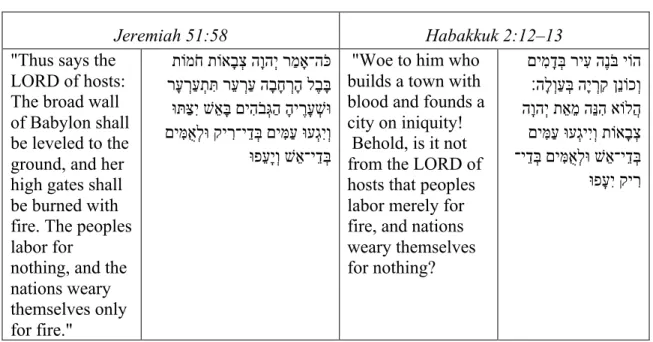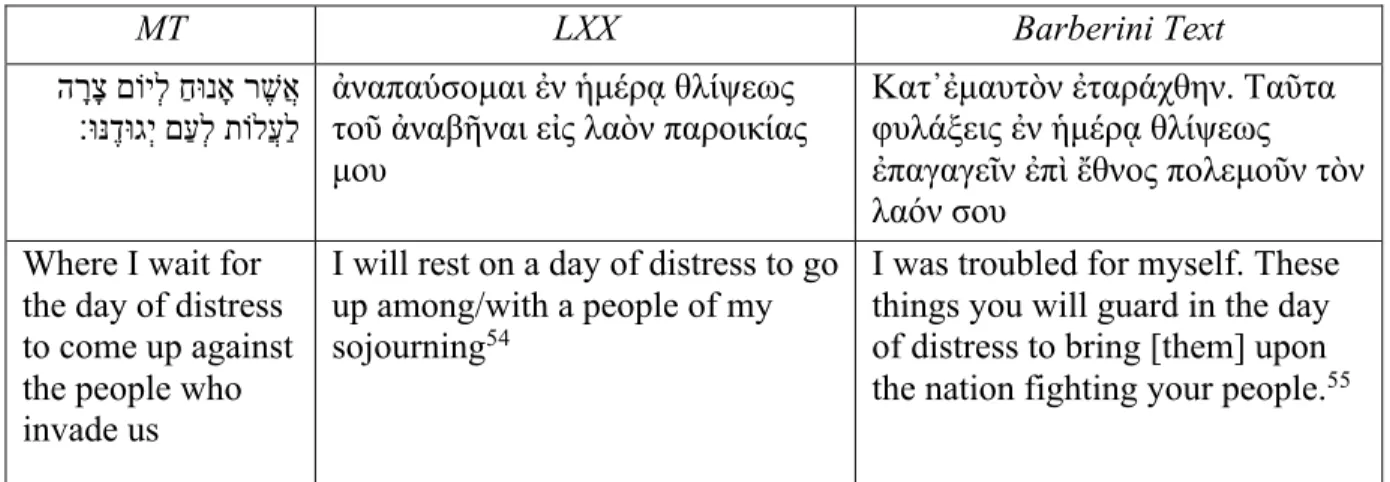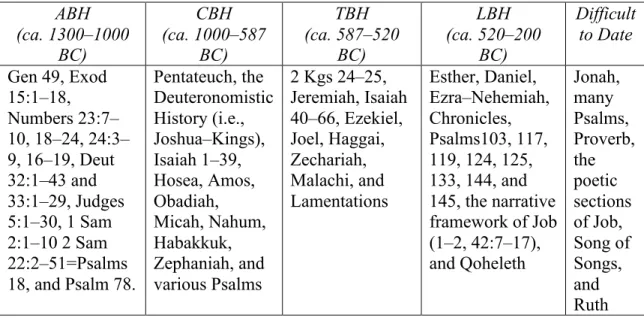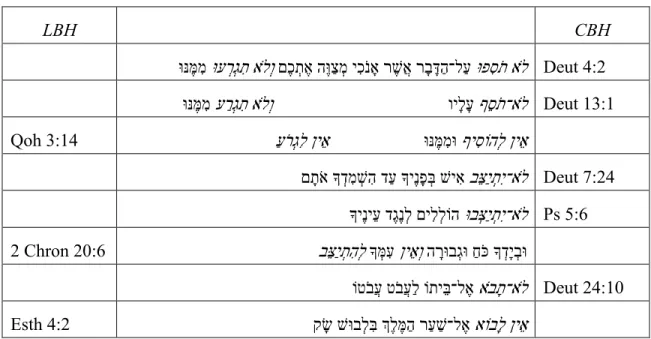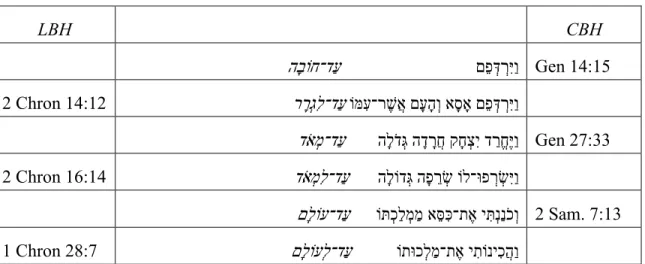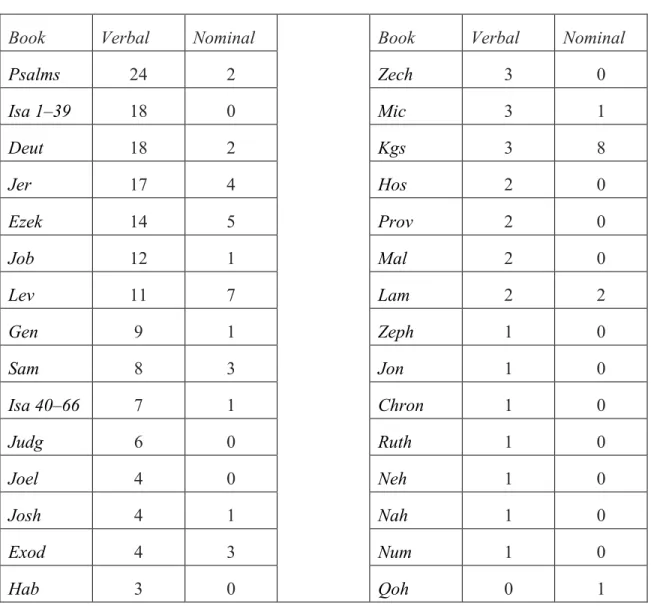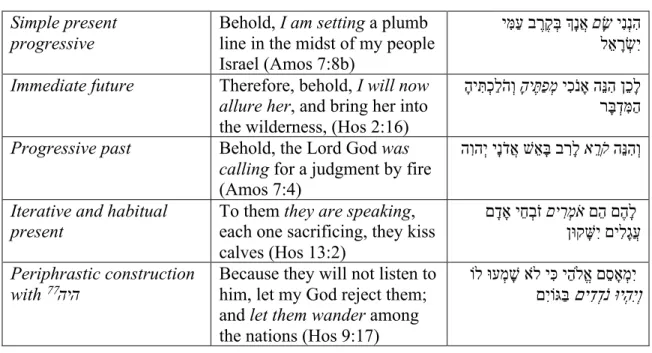Your patience in this process and trust in the patient has brought me through many days of doubt, denial and despair. JANES Journal of the Ancient Near Eastern Society JAOS Journal of the American Oriental Society JBL Journal of Biblical Literature. I am extremely grateful for the patient, thoughtful, and competent guidance provided by Doktorvater Duane A.
He opened the world of the Septuagint to me, which paid off. At symposia, I learned the benefits of scientific cross-fertilization and challenging but constructive criticism. I am also grateful for thorough discussions with fellow PhD students such as Aubrey Sequeira, Collin Smothers, Matt Roberts, and Nate Collins.
Thanks to Bryan Estelle, Professor of Old Testament at Westminster Seminary in California for instilling in me a deep love for the Hebrew Bible. I thank God for my two boys, Cohen and Caleb, who pray daily that "Daddy would finish his thesis." The Lord has heard these prayers and has been pleased to answer them.
INTRODUCTION
This study argues that chapter 3 was an integral and original part of the book of Habakkuk. Toffelmire, eds., The Book of the Twelve and the New Form Criticism, Ancient Near East Monographs 10 (Atlanta: SBL Press, 2015), 1. First, form critical evaluations of the book of Habakkuk do not give due weight to the two genres in the book which clearly describes the headings: the מַא שָּׂ.
A literary sensitivity to Habakkuk's intent should indicate where Habakkuk's answer is in the final form of the book. The shortcomings of the secondary inclusion view require a re-evaluation of how the book of Habakkuk fits together. The identification of the vision in the book of Habakkuk will be dealt with in Chapter 3 of this work.
Humbert used this cultic connection as a basis for arguing for the unity of the book. Mid years, revive it; mid years, make it known. Embedded in the very genre and structure of מַא is an anticipation of the prophet's response to שָּׂ.
But those who are addressed appear to be whoever receives and believes the message of the vision (see Hab 2:4).
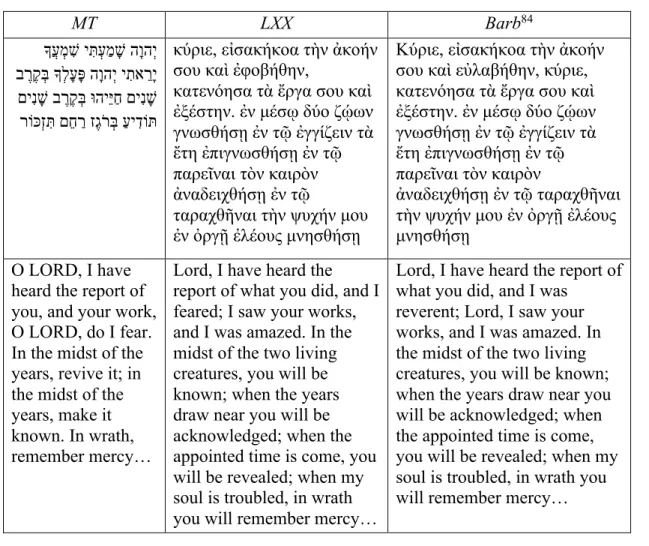
The identification of the vision with Hab 2:4 or 2:4-5a presupposes a too literal reading of the instructions for recording the vision and does not warrant Habakkuk's assurance of the fall of Babylon in 3:16. All versions agree with the MT with the exception of the Syriac.62 So I conclude that YHWH continues his speech throughout 2:5. In this rhetorical flourish, a deictic shift is indicated, where YHWH places false funeral laments in the mouths of oppressed nations.63 Brown and Levinson have called this rhetorical device a "distancing from a position."64 It is not simply YHWH condemning the actions of the arrogant.
In keeping with the wisdom dimension of this "mocked funeral dirge" celebrating the oppressor's reversal of fortunes, Boyle notes that focusing on the victims and their interaction with the oppressor makes the argument less "theological" and more "sapiential". "Earthly. Citing the example of Isa 14:4-21, he says that the false funeral song uses "the theme of reversal of fortune as a cause for rejoicing rather than mourning, emphasizing the man's former power and prestige as a way of paying homage on. his present weakness." 5 and 6 confirm this.67 Verses 2-3 serve as instructions for the prophet regarding the recording and propagation of the vision, and the vision itself goes from v.
Without a clear contextual or stylistic break, it is best to see it as part of the oracles delivered by YHWH. Second, regarding the juxtaposition of YHWH's justice and the revival of the Chaldeans, the affliction assures Habakkuk that the plunderer will be plundered (2:8). Even though the arrogant marched through the breadth of the earth and exalted himself (1:6–7) and spread violence, the knowledge of the glory of the Lord would fill the earth as the waters cover the sea (2:14).
Habakkuk's hunch that YHWH's purpose in raising Chaldea was only corrective (1:12) has been shown to be true. Third, regarding YHWH's purpose, the sufferings assure the prophet that YHWH is willing and able to save his people despite his use of the Chaldeans. Fourth, regarding the prophet's complaint about YHWH's silence in the face of violence, the sufferings assure the prophet that YHWH speaks in a vision (2:2) and the nations join their voices in condemning the violence and oppression of the arrogant (2 :6) ).
Finally, the paralysis of the law will not be overcome by the obedience of the righteous (i.e., Judah), but by their faith (2:4) in a righteous one to come. Duane Garrett notes that "the implicit connection between YHWH's command to Moses to prepare 'tablets' for the Decalogue and his command to Habakkuk to write the vision on the tablets...suggests that YHWH is giving Habakkuk a new Torah." that "the just shall live by his faith." It was this text (Hab 2:4) that Paul and the author of the Hebrews used to refer to the one who puts his faith in Christ for salvation, the answer to God's righteous demands. Here we see a foreshadowing of the New Covenant of another, and greater, righteous one who would fulfill the Deuteronomic requirements of the covenant and gain the covenant blessings for his people who believe in him.
Copeland, “Middle Years,” in Text as Pretext: Essays in Honor of Robert Davidson, ed. When the rise of the Chaldeans is described in the quotation from the previous oracle, חָ. Rooker, Biblical Hebrew in Transition: The Language of the Book of Ezekiel, JSOTSup 90 (Sheffield, England: JSOT Press, 1990).
A directed ה does not make good sense of the line and seems out of place in MT. This means that the two occurrences of the pronominal suffix ה in Hab 3 fit well into the seventh century BC. Rainey, Canaanite on the Amarna Tablets: A Linguistic Analysis of the Mixed Dialect Used by Scribes from Canaan, vol.
For a detailed discussion of the enclitic mem in the text and in the history of science in general see H.D. The second feature is the virtual absence of the liqtol (לְ + Qal inf. cs.) in the inserted hymns. Instead, these two liqtols complete the idea of the main verb in the first cola.
Possible exceptions to the null presence of APP in the ABH corpus are Num 24 (Oracles of Balaam) and 1 Sam 2 (Song of Hannah). The final premise is (3) the presence of the enclitic mem and archaic pronominal suffix ה 3ms. The only exception to the lack of a consecutive tense system is found in the three occurrences of wayyiqtol in Hab 3:6.
So far I have pointed to the APP's virtual absence from the deployment anthems.
